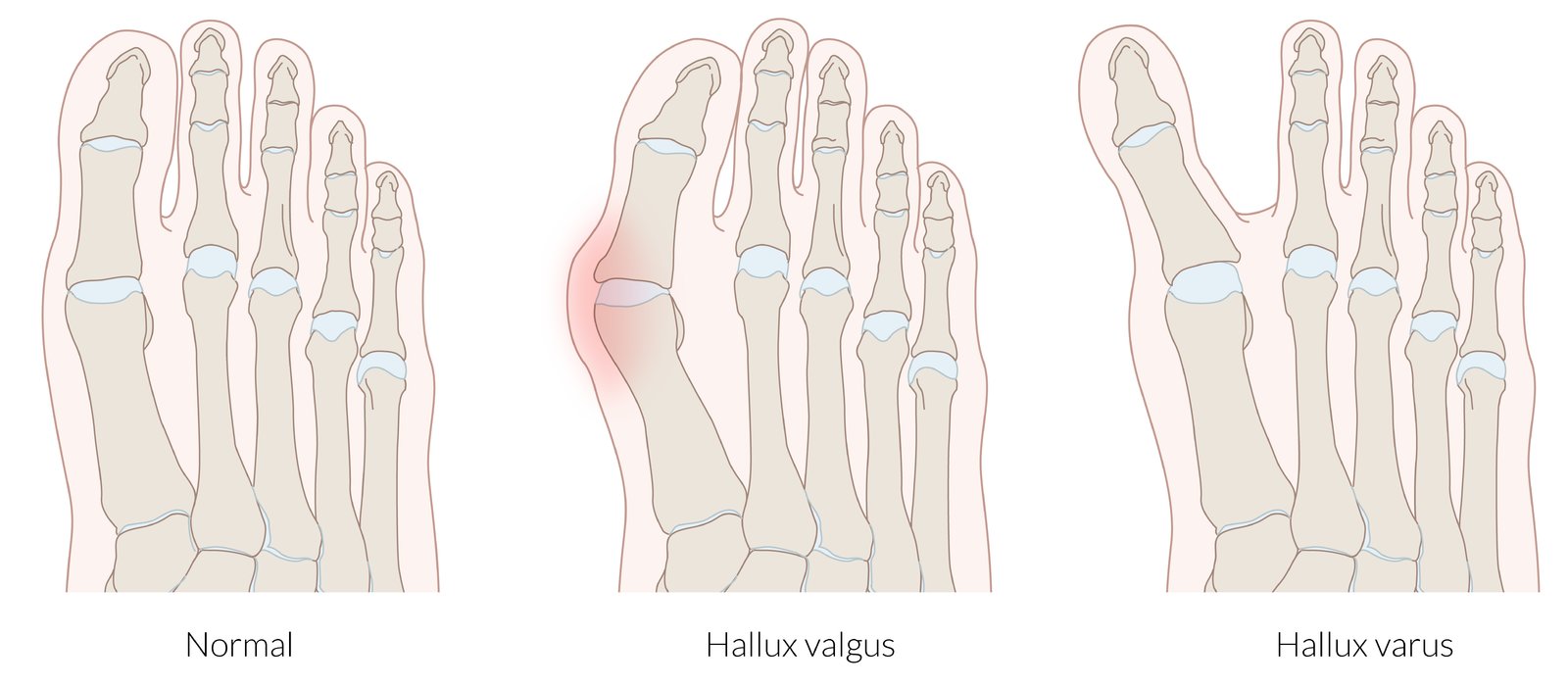Hallux varus is a deformity of the big toe where it deviates away from the midline of the foot, towards the other toes. This condition is the opposite of hallux valgus, where the big toe deviates towards the outside of the foot. Hallux varus can be congenital (present at birth) or acquired due to various factors.
Congenital hallux varus is usually caused by abnormal development of the foot during fetal development. It can be associated with other foot deformities or genetic conditions. Acquired hallux varus can result from trauma, such as a fracture or dislocation of the big toe, or from iatrogenic causes (caused by medical treatment), such as inappropriate surgical procedures or complications following surgery for hallux valgus.
Hallux varus can cause discomfort and pain due to shoe fitting difficulties, pressure on the side of the foot, and instability during walking. It may also lead to the development of other foot problems like calluses, corns, and bunionette deformities.
Treatment for hallux varus depends on the severity and underlying cause. Non-surgical options may include stretching exercises, splinting, or taping to improve toe alignment. In some cases, orthotic devices or specially designed shoes may be recommended to provide support and alleviate symptoms. If conservative measures are unsuccessful or the deformity is severe, surgery may be considered to realign the toe and correct the deformity.
It is always recommended to consult with a health care professional for a accurate diagnosis and treatment options.


